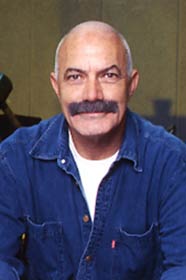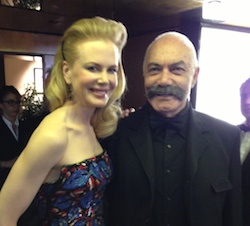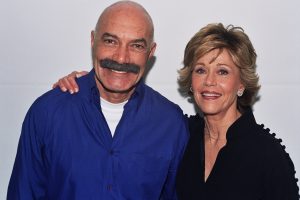



Though marred by implausibility, undernourished characters, and bad climax, Flightplan is nonetheless well-mounted star vehicle for Jodie Foster that combines the thrills of a taut psychological suspenser with a mother-daughter drama, placed against the fear and anxiety involved in flying.
(When analyzing American thrillers, I always go back to what Hitchcock has said about the “plausibles” in his long interview with Truffaut, in which he himself pointed out the “plausibility” problem of each and every thriller he has made (See Film Comment about “The Lady Vanishes”)
Technically, but only technically, you could say that, “Flightplan” is to airplane stories what “Das Boot” was to submarine tales, an exciting thriller that takes full advantage of the properties of film as a unique medium, manipulating limited space, constrained time, and generic expectations.
Though “Das Boot” is more intelligent and politically poignant, the comparison to the 1982 film is valid since “Das Boot” was directed by German helmer Wolfgang Petersen and “Flightplan” marks the American debut of German director Robert Schwentke, who follows up after his modest German film, Tattoo.
I have no doubts that Schwentke will follow in the footsteps of Petersen into a Hollywood career; I just hope that he won’t make the same trivial fare that his compatriot has been making over the past decade, what with “Outbreak,” “The Perfect Storm,” “Troy,” and the upcoming remake of “The Poseidon Adventure.” To be fair, Petersen has also made “Air Force One,” a decent thriller set in the high skies with Harrison Ford as the U.S. president. However, as entreating as that movie was, “Flightplan” is more impressive, both narratively and technically.
Inevitable comparisons will also be made with Wes Craven’s “Red Eye,” not only because both movies are set within the confined, claustrophobic zone of an airplane, but also because both feature strong women in non-traditional female roles. In fact, in the original script of “Flightplan,” the protagonist was male, and it was changed to a female to accommodate Jodie Foster, though the name Kyle remained the same.
Perfectly cast and in top shape, Foster is a most suitable heroine with her alert intelligence and physical skills, qualities used to great advantage in her last film, “Panic Room,” which was also set in a restricted area, a house. More consistently gripping and better-made than David Fincher’s thriller, “Flightplan” may prove to be the first blockbuster of the season, likely to appeal to all demographic groups due to its timely issue and superb execution.
“Flightplan” is on par with “Red Eye,” which also had no characters to speak of, except for the lead played by McAdams. Though stylishly directed by Craven, “Red Eye” was ultimately a gimmicky exercise based on a single premise. In contrast, “Flightplan” benefits from a workable screenplay, one sharply observed character, played by Foster, even if the secondary parts played by Peter Sarsgaard and Sean Bean, are underdeveloped.
The film’s first hour is quite brilliant. Too bad that the last reel is weak–it’s too generic and routine, just like the chase scene that marred “Redye”–for “Flightplan” could have been a much better film. Even so, technically, this is exciting Hollywood, or rather German-Hollywood, filmmaking.
Can a child suddenly disappear from an airplane 37,000 feet above ground This is the central, shattering question of “Flightplan,” a visceral thriller that transports the viewers into the turbulent confines of an international flight from Berlin to New York, putting them right at the center of a chilling mystery.
Foster stars as Kyle Pratt, the frantic but fiercely intelligent mother whose deepest protective instincts will be triggered by a haunting in-flight nightmare, when, in the middle of the trans-Atlantic trip, her young daughter Julie (Marlene Lawson) turns up missing without a trace. Did the girl ever board the plane Did she ever exist
The film shrewdly associates the viewers with the passengers on screen. Hence, the dilemma facing the passengers and crew onboard is the same predicament that the moviegoers of “Flightplan” experience. Both groups have to determine whether Kyle, who arrives on the flight still reeling from the recent loss of her husband, is a woman gone mad with grief, or a formidably determined mother whose child is in grave danger that threatens the entire plane.
Adding to the mystery is the fact that Kyle and her daughter were the very first to board the plane, and thus no one seems to remember even seeing the girl. Indeed, neither of the flight attendants (Erika Christensen and Kate Beahab) can recall the existence of a girl. To support their point, they claim that Julie’s name doesn’t even appear on the flight manifest.
Kyle is positioned against two suspicious men. While Airline Captain Rich (Sean Bean) and Air Marshal Gene Carson (Peter Sarsgaard), in charge of safety, don’t want to doubt Kyle’s insistent claim that her daughter has vanished, all evidence points to the fact that Julie was never onboard. For a while, Casron serves as mediator between Kyle and the Captain. But for the most part, there’s an intriguing interplay between Kyle, Carson, and Rich as they try to size one another up and figure out one another’s shifting agendas.
Two interrelated issues quickly emerge. What is the truth behind Kyle’s distress Did her husband commits suicide or pushed off of the roof We know that his coffin is supposed to be traveling with Kyle.
Then there’s the question of who on board can be trusted, and just how far or deep would Kyle delve into the harrowing mystery As paranoia and doubt mount, some of the passengers become victims of stereotyping and profiling. Angry and frustrated, Kyle attacks an Arab passenger with charges that he had kidnapped her daughter, and the poor guy has to prove where he had spent the night prior to the flight.
Kyle herself is confronted with the most unsettling fears any mother could face: Losing her only child. That Julie disappears while Kyle falls asleep in the back row for a couple of hours make things worse, for Kyle is tormented by guilt. Soon, Kyle’s reality and consciousness are questioned. She is trapped in a situation where no one can help. Pushed to the edge and fighting for her sanity, Kyle goes to dangerous lengths to find and save Julie.
Peter A. Dowling and Billy Ray’s script mixes human emotions and ethical dilemmas. The movie makes the most of the chaos and paranoia of waiting in terminals, flight delays, and the whole airport experience, reflecting a time when insidious sense of anxiety pervades the very being at an airport. The sophisticated thriller takes place entirely on an airplane, an enclosed realm where, in today’s world, isolation, fright, and suspicion are already heightened to the max. Kyle is drawn into a complex web of mystery, treachery and perceived conspiracy that take her to the very depth of maternal tenacity, bringing the audience along for the ride.
Though the story was developed before Sept. 11, the script took on an increased relevance in the aftermath of the terrorist attacks. “Flightplan” reflects the new era of travel, one that’s filled with uncertainty and palpable awareness of one’s fellow passengers, as well as intensified feelings of protectiveness among parents. Indeed, in the wake of 9/11, the themes of paranoia and shifting perception of foreigners and strangers come even more to the fore than originally intended.
“Flightplan” is a Hitchcockian mystery set in the sealed world of a modern jet airliner, with all its nooks, shafts, and hiding places. Early on, it’s established that Kyle is an engineer with expert knowledge of all the technical and mechanical issues involved with aircrafts.
Hitchcock would have been proud for another reason, which I can’t explicate for fear of spoiling the fun. Suffice is to say that there are some similarities between Hitchcock’s two “train” movies, “The Lady Vanishes” (1938) and “Strangers on a Train” (1951).
The basic plot and narrative structure of “Flightplan” echoes Hitchcock’s next-to-last British film, “The Lady Vanishes,” in which an old woman (Dame May Whitty) disappears during a train ride, and nobody believes her friend (Margaret Lockwood), that she ever existed, claiming that it’s a fig of her imagination. By the way, Hitchcock was neither the first nor last to use this premise (See Film Comment for a detailed analysis of “Disappearance” movies).
The premise–a parent on a plane has her child vanish and nobody admits to ever seeing her onboard–could have gone in any number of directions, such as supernatural, alien abduction, and hallucinatory fantasy. In fact, Foster herself has appeared in a similar film, Robert Zemeckis’ “Contact” (1997), as a woman who has devoted her life to studying the stars, believing there’s life Out There. Ostracized by her superior at the National Science Foundation, she’s eventually cut off–until she receives a message from space.
Despite major problems with plausibility, as how passengers now-a-days are allowed to behave on an airplane, the filmmakers do what they can to ground this premise–truly a high concept–in a recognizable reality that most viewers will be able to relate to viscerally, if not intellectually. The filmmakers know that strangers stuck together on a plane in an explosive situation allows the exploration of group dynamics under pressure, with both good and bad results.
The movie’s primal idea grabs you by the gut, which makes the later implausibilities, more tolerable, if not acceptable. The last 15
minutes are vastly disappointing, leaving bad taste with a preposterous chase scene between Foster and the villain that feels like “Die Hard” or a Steven Seagal B-actioner.
Nonetheless, Schwentke shows visual innovation throughout in a movie whose first half is full of twists and turns. Schwentke has made a number of shrewd decisions that enhance the tension. The opening sequences, set at Kyle’s house and then at the terminal (where Julie gets lost for a few minutes) notwithstanding, the movie unfolds in a single contained environment. There are no cuts to the control power, or to any character on the ground. Everything stays within the plane’s claustrophobic space, trapping the audience along with the characters, leaving both groups struggling to resolve the mystery.
Also smart is the decision to make Julie leave an indelible impression on the audience in two or three scenes, so that her sudden absence would be palpable and disconcerting.
The dread and the entire experience are consistently seen from Kyle’s subjective POV. Exactly how her husband died is not revealed until late in the story, but it’s clear that Kyle, a smart yet possibly unstable widow, is beginning to lose her grip on reality as a result of his death. Kyle’s emotional distress is compounded by the fact that she’s become the sole caretaker of her 6-year-old daughter.
Appearing in almost every scene, Foster is simply sensational. She brings tremendous energy and complexity to her role, embodying every detail of her transformation, from numbed grief to horrified shock to galvanized action, as she stops at nothing to solve the gut-wrenching mystery.










